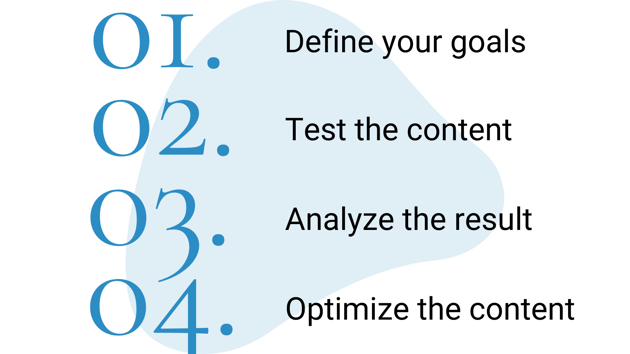Measuring and analyzing data to understand and improve results is a method as old as time. However, applying said method to communication and marketing seems to still be a foreign concept to a lot of people. For a long time now, it's been widely accepted that communication is, well, a gut-feeling-based field. A gut-feeling-based field expected to multiply revenue and work magic on brand positioning.
If you stop and think about it, communication comes with a huge responsibility, with so much depending on it being successful. We believe communication is way too important to be left to gut feelings and luck. And that's where the measuring and analyzing of data comes in.
Why Bother? Is Content Analysis Really That Big a Deal?
![]()
A lot of people tend to underestimate the importance and the long-term effect that communication can have on a company. When you start to actually break things down, however, it becomes pretty clear: communication is an incredibly powerful tool that can and should be used when striving to reach your company's strategic goals. But how can you make communication a prioritized strategic tool if other people in the organization still underestimate its significance? The solution is simple: you need to start measuring the results of your communication efforts.
By measuring your efforts, you'll learn lots of valuable insights about your target audience and what they respond positively to. In other words, measuring and analyzing your communication is key to optimizing the content you create to better attract and reach your target group. And as a result, your communication efforts also become a tool for reaching your sales goals.
Measuring your communication's effect on your target group is also one of the keys to demonstrating the value of your communication efforts to other organizational stakeholders.
Marrying Your Business and Your Communication Strategies
![]()
As we mentioned earlier, your communication plays an essential role in reaching your business goals. So, it only makes sense to base your measurements and communication goals on your organization's strategic objectives. Remember, communication is a tool – not an independent entity.
Start by creating a clear communication strategy based on your business goals and the strategy you already have in place. You want the strategy to incorporate the goals of the entire organization. Once you do this, you'll be able to prove how communication affects the clear and relatable metrics your co-workers all have agreed are important.
So, how do you start measuring your efforts? Unfortunately, there's no "one size fits all" solution here. There are, however, seven universal principles, known as the Barcelona Principles, that communicators can use as a good starting point.
Read all about the principles and how to use them to kick-start your measuring and content analysis process in this blog post and download our E-book on the Barcelona Principles here.
The Results Are In – Time to Get To Work

Once you start measuring your communication efforts, you'll have the numbers you need to win over your colleagues – and at first, that might seem like the end goal. However, measuring your results is also the key to improving them. Because not only does the data prove the efficiency of your communication and marketing efforts; it also gives you insight into the market and your target audience. Therefore, it's crucial to look at measuring your results as a tool you can use in your daily work – not just for reporting or defending your work's importance.
To put your results to work and start utilizing them as the tool they are, just follow these four key steps and start optimizing your communication:
- Define your goals
- Measure your results
- Analyze the data
- Optimize the content
And remember – it's an iterative process! Once you've analyzed your results and produced new, optimized content, it's time to test it again. It's a continuous process that keeps improving your communication efforts as long as you implement the four steps.
Read more about how data measuring can be utilized as a tool for data-driven content analysis on, for example, Instagram here.
With the media landscape growing increasingly fragmented, the importance of correctly measuring and analyzing your data increases exponentially as well. The insights you get from measuring and analyzing your data properly are key to navigating this ever-changing landscape. And to keep improving, it's crucial that you measure before, during, and after your initiatives. This is how you can take your work from being gut-feeling-based to suddenly being qualified and scientific.
The constantly evolving media landscape affects more than just marketing: it affects everyone creating any type of content, from commercial marketing on Instagram to traditional newspapers. And interestingly enough, different geographical markets seem to have slightly different experiences.
So, Where Does Retriever Come Into the Picture?
As an unbiased and independent actor, our evaluations are objective and trustworthy. Our experts can help you analyze your media coverage, see the data from a broader perspective, and even compare it to your competitors.
We talked to two of our media and data insight analysts, Sofia Cottman and Jenny Wikstrand, to learn more about how they approach the challenges that come with analyzing and interpreting vast amounts of data every day.
Retriever and the Future of Data and Content Analysis
It's hard to mention the future nowadays without instinctively thinking about AI. And the same rings true when we talk about the future of measuring and analyzing data. Recently, a new research center for artificial intelligence, NorwAI, opened up in Norway, and we decided to partner up with them. In the words of Professor Jon Atle Gulla, head of NorwAI, the center's purpose is to develop groundbreaking theories, methods, and technology for efficient and responsible utilization of computer-driven artificial intelligence in innovative industrial solutions. And that's definitely something we want to be a part of!
Table of contents








